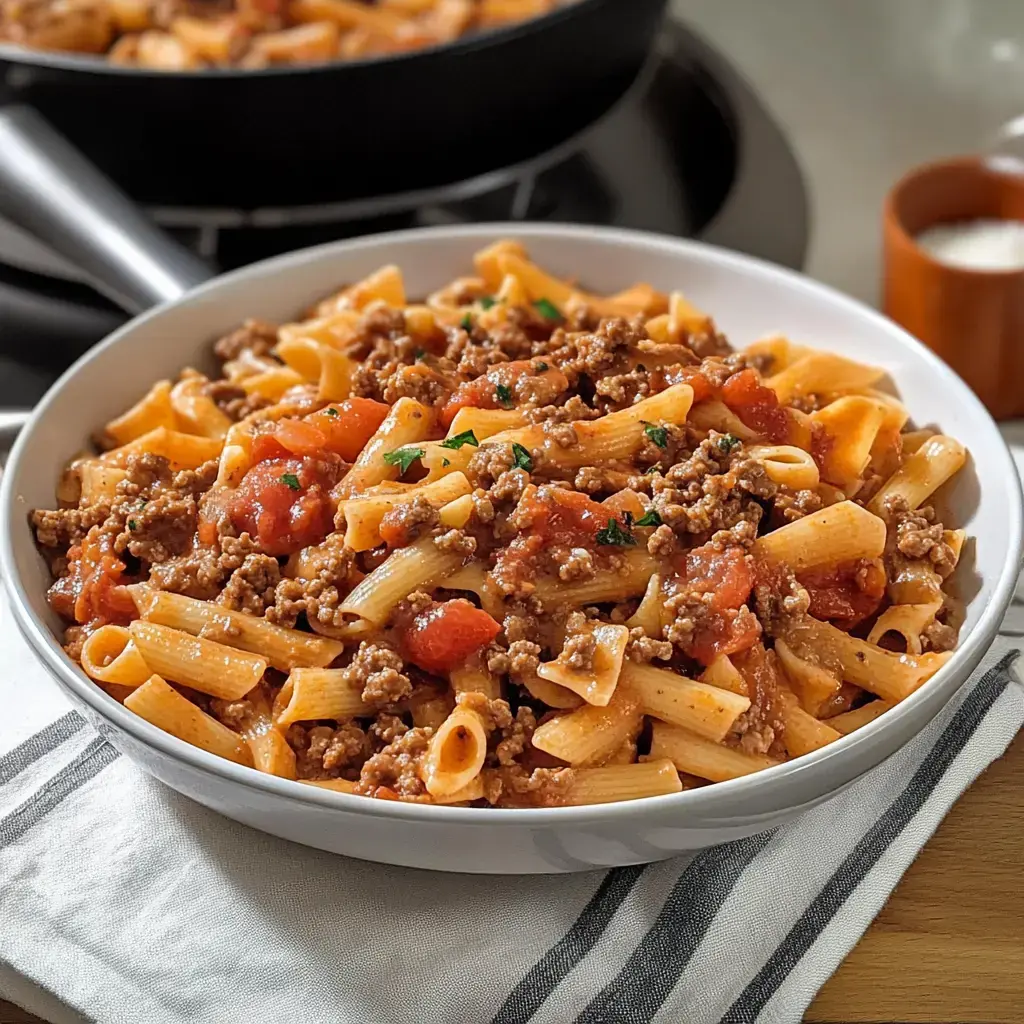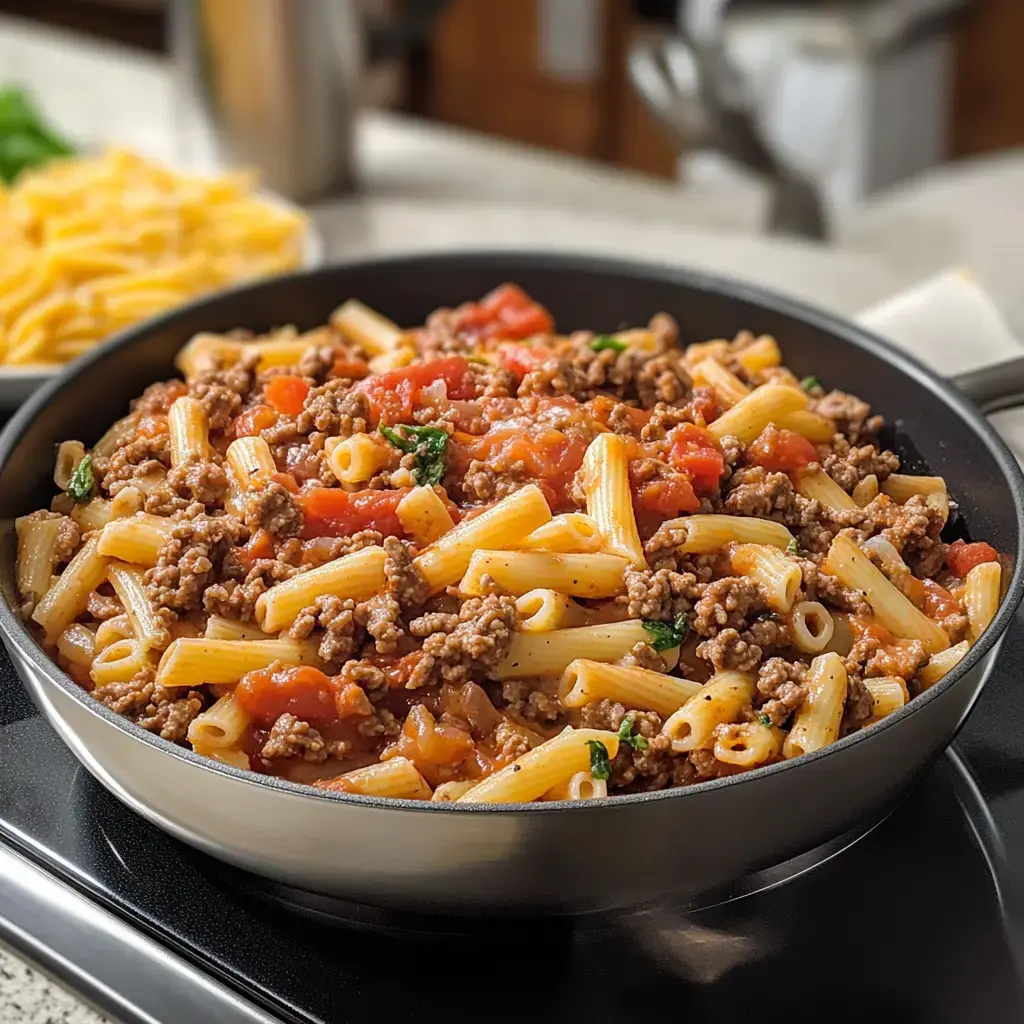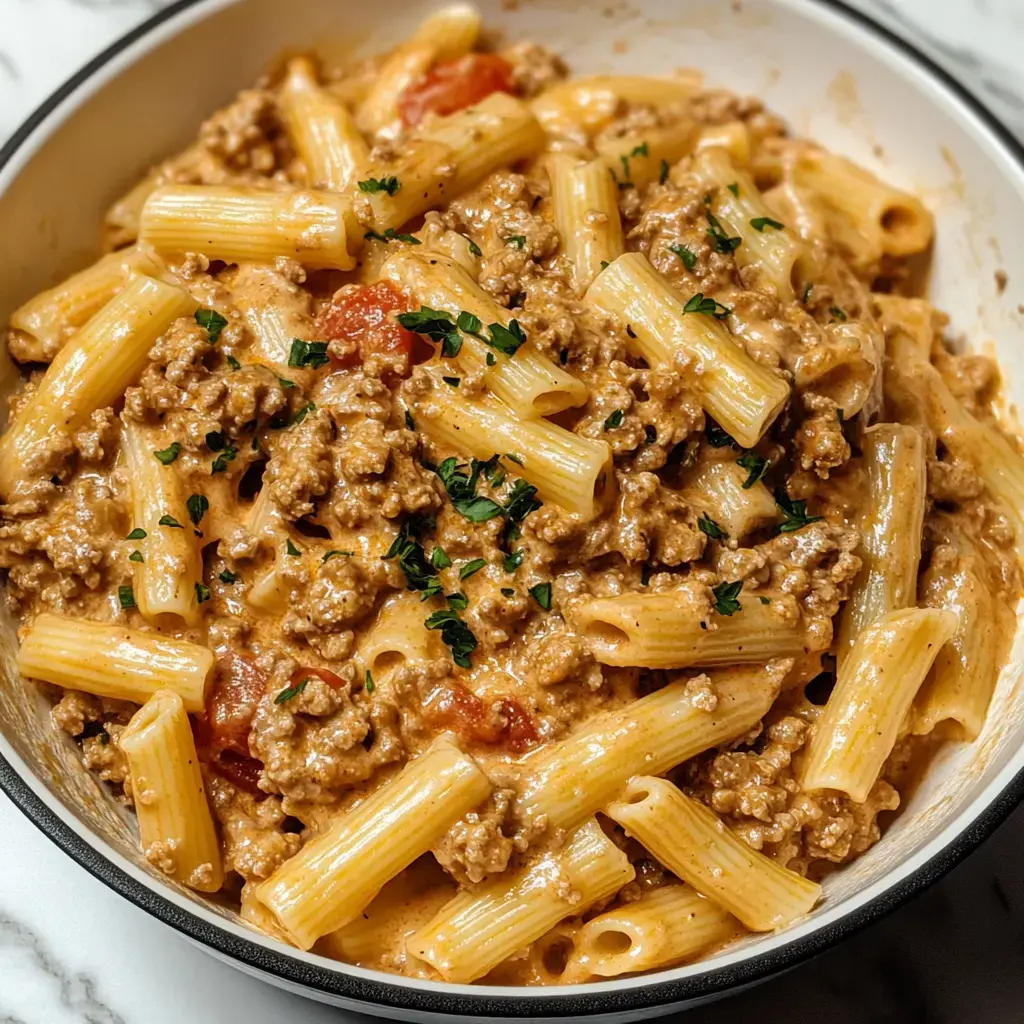 Pin it
Pin it
This refined interpretation of classic comfort pasta emerged through careful development of sauce techniques combined with proper protein preparation. Initial experimentation focused on achieving optimal balance between dairy elements and savory beef, while maintaining proper sauce consistency. Multiple iterations refined the methodology, particularly regarding sauce development and pasta integration. The distinctive combination of tomato elements and enhanced cream creates exceptional depth while preserving traditional comfort aspects.
Why This Pasta Stands Apart
This creation achieves distinction through its precise balance of premium ingredients and sophisticated sauce development. The careful preparation of ground beef ensures proper flavor development, while selected pasta variety provides optimal sauce adherence. Each component serves specific purpose in flavor enhancement - from the initial protein preparation to the final sauce emulsion. Temperature control during preparation ensures proper sauce consistency while maintaining pasta integrity. The incorporation technique creates superior texture development while preserving proper moisture content.
Essential Components
- Primary Elements:
- premium ground beef, selected for optimal fat content
- pasta variety chosen for proper sauce retention
- extra virgin olive oil for proper heat conduction
- selected aromatics for flavor foundation
- concentrated tomato paste for depth development
- premium heavy cream for proper sauce formation
- balanced seasoning blend for flavor enhancement
- Equipment Requirements:
- heavy-gauge cooking vessel
- proper temperature monitoring devices
- calibrated measuring implements
- appropriate stirring tools
Creation Process
- Initial Preparation
- Begin with proper pasta cooking technique ensuring optimal texture. Execute protein cooking with attention to proper browning. Develop aromatic base with specific methodology.
- Sauce Development
- Incorporate tomato elements with proper technique. Create cream integration with attention to temperature control. Monitor sauce consistency throughout process.
- Final Integration
- Combine elements systematically ensuring proper incorporation. Execute final adjustments with attention to seasoning and consistency.
 Pin it
Pin it
Technical Insights
Temperature control proves essential throughout preparation process. Understanding pasta cooking techniques significantly impacts final texture. Proper protein cooking methods affect flavor development considerably. Monitoring heat levels during sauce preparation prevents separation. Each component requires careful attention to maintain proper balance while ensuring optimal flavor development. Timing sequence creates significant impact on final presentation.
Variations and Adaptations
This foundational recipe accepts numerous sophisticated adaptations while maintaining core methodology. Various protein selections create intriguing flavor profiles. Alternative pasta varieties allow for fascinating texture variations. Different sauce components provide opportunities for complexity development. Each adaptation requires specific adjustments to maintain proper consistency and flavor integrity.
 Pin it
Pin it
Service Considerations
Professional presentation elevates this preparation to sophisticated status. Temperature consideration during service impacts texture significantly. Understanding proper portioning enhances guest experience. Creating balanced accompaniments maintains professional appearance while ensuring proper meal composition. Storage protocols between service periods significantly impact quality maintenance.
Frequently Asked Questions
- → Why add Dijon mustard?
Dijon adds subtle tang and depth to the sauce without tasting mustardy. It helps balance the rich cream and tomatoes.
- → Should I drain the tomatoes?
No, keep the liquid from the canned tomatoes. It adds flavor and helps create the right sauce consistency.
- → Can I use different pasta shapes?
Any medium pasta shape works well. Choose shapes that hold sauce like penne, rotini, or shells.
- → Why cook onions before beef?
Sautéing onions first develops sweetness and flavor. They also cook better in oil than with the beef.
- → Can I make this ahead?
Best served fresh, but leftovers keep well for 2-3 days. Reheat gently as cream sauce can separate if too hot.
